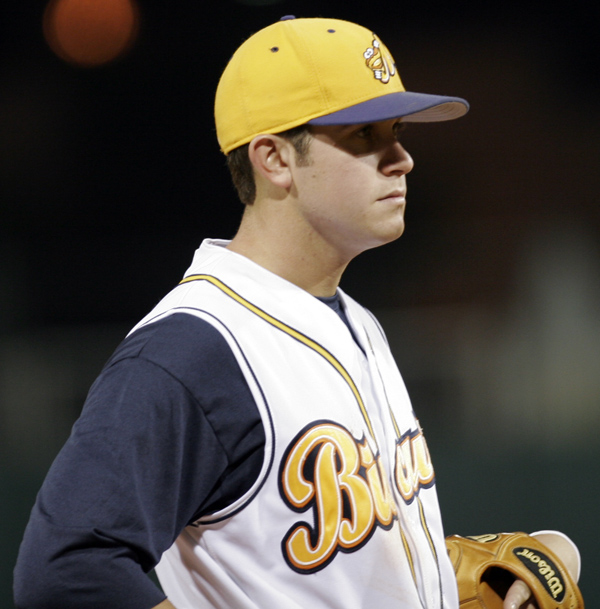Baseball has been an integral part of American heritage throughout most of its history. The game of baseball was invented by Abner Doubleday in 1839 and has seen its share of American

historical events. The game of baseball is very much like America itself. Baseball has survived a depression, countless wars (World War I and II, Korean War, Vietnam), internal scandals (Black Sox Scandal, Pete Rose’s gambling problems), and even union problems (players strike in 1972, 81, and 94, owner’s lockout in 1990). Baseball, like America, experienced a strong test of will during World War Two. Some of baseball’s greatest players lost valuable years from their career because they were fighting oversees.
Upon returning home from the war, many ballplayers could not return to the diamond because of injuries they sustained while fighting. Despite the negative effect war had on baseball, the game itself encountered a positive “rebirth” during the war years. Baseball became a national pastime, and its importance to America was recognized by one of the nation’s greatest leaders; Franklin Roosevelt. African-Americans were beginning to fill major league rosters. A women’s

baseball league was formed. Many of America’s baseball heroes became war heroes. The history of baseball and America during World War Two was extremely important in the development of the game and the nation.
American involvement in World War Two did not intensify until the Japanese bombed Pearl Harbor. Then Commissioner, Judge Kennesaw “Mountain” Landis was considering the idea of shutting down baseball until the war ended. Landis wrote to the President, asking if he should allow major league teams to begin spring training. Franklin Roosevelt responded to Kennesaw's inquiry with the now famous Green Light Letter. In the letter, Roosevelt wrote;
“ My dear Judge:
Thank you for yours of January fourteenth . As you will, of course, realize the final decision

about the baseball season must rest with you and the Baseball club owners so what I am going to say is solely a personal and not an official point of view.
I honestly feel that it would be best for the country to keep baseball going. There will be fewer people unemployed and everybody will work longer hours and harder than ever before.
And that means that they ought to have a chance for recreation and for taking their minds off their work even more than before.
Baseball provides a recreation which does not last over two hours or two hours and a half, and which can be got for very little cost. And, incidentally, I hope that night games can be extended because it gives an opportunity to the day shift to see a game occasionally.
As to the players themselves, I know you agree with me that the individual players who are active military or naval age should go, without question, into the services. Even if the actual quality to the teams is lowered by the greater use of older players, this will not dampen the popularity of the sport. Of course, if an individual has some particular aptitude in a trade or profession, he ought to serve the Government. That, however, is a matter which I know you can handle with complete justice.
Here is another way of looking at it - if 300 teams use 5,000 or 6,000 players, these players are a definite recreational asset to at least 20,000,000 of the fellow citizens - and that in my judgment is thoroughly worthwhile.
With every best wish,
Very sincerely yours,
Franklin D. Roosevelt” (
www.baseball-almanac.com)
Roosevelt confirmed the fact that baseball had become America’s pastime, and now more than ever, he needed baseball to help Americans pass the time. As Roosevelt asked baseball to help keep American’s worry free for two hours, the military asked a number of ballplayers to enter the service. Roosevelt decided not to exempt current ball players from the draft because he felt the game would not loose its feel if it were played by men who were either too old or too young for the war. Famous players such as Ted Williams, Joe DiMaggio, Bob Feller, and Warren Spahn all served in the United States military in one form or another.

Bob Feller became the first major leaguer to volunteer to fight in the war. Feller lost four years to the war, and by doing so, effectively cost him the chance of obtaining baseball’s three hundred career wins total, a very rare achievement for a pitcher. Feller decided to enlist with the United State’s Navy two days after Pearl Harbor was bombed. Feller served as an “anti-air craft gunner on the battleship Alabama with the Third Fleet. His fleet fought in battles at Tarawa, Iwo Jima and the Marshall Islands.” (Mondore). Also stated in Mondore’s article entitled “
1942: When Baseball Went to War” was Feller’s comments regarding his experience with the war. Mondore wrote; “Humble over his own role in the war, Feller went on to state, "I am no hero. I came back. I never met a bullet with my name on it." The anti-air craft gunner earned five campaign ribbons and was studded with eight battle stars. (Mondore).
Ted Williams, the famous outfielder for the Boston Red Sox, served his country as a Marine

fighter pilot during World War Two. Williams never actually saw any combat action during the war, but spent three years training with the Marines. “During his training, he set records for hits, shooting from wingovers, zooms and barrel rolls. He also set a still-standing student gunnery record, in reflexes, coordination and visual reaction time.” (Mayo). It wasn’t until the Korean War that Williams saw actual combat. His flying partner was none other than famous astronaut, John Glenn.
To be continued.
 Name: Clay Buchholz
Name: Clay Buchholz















































